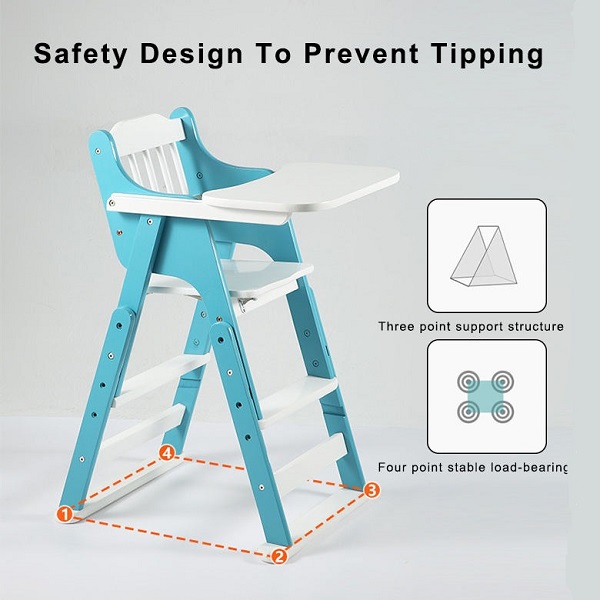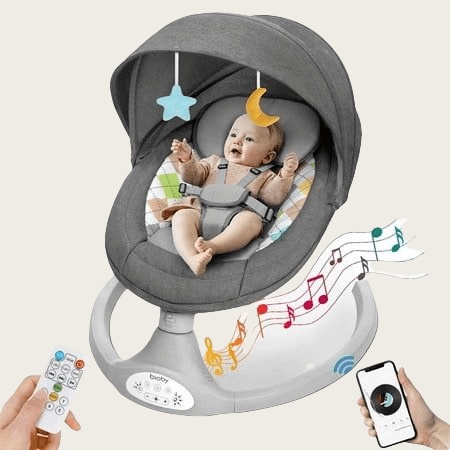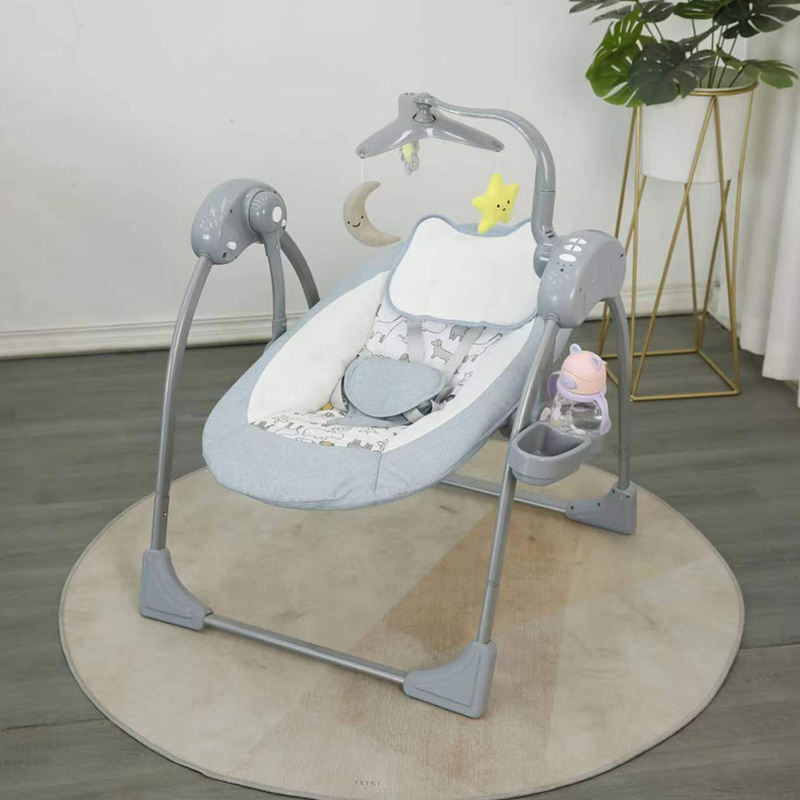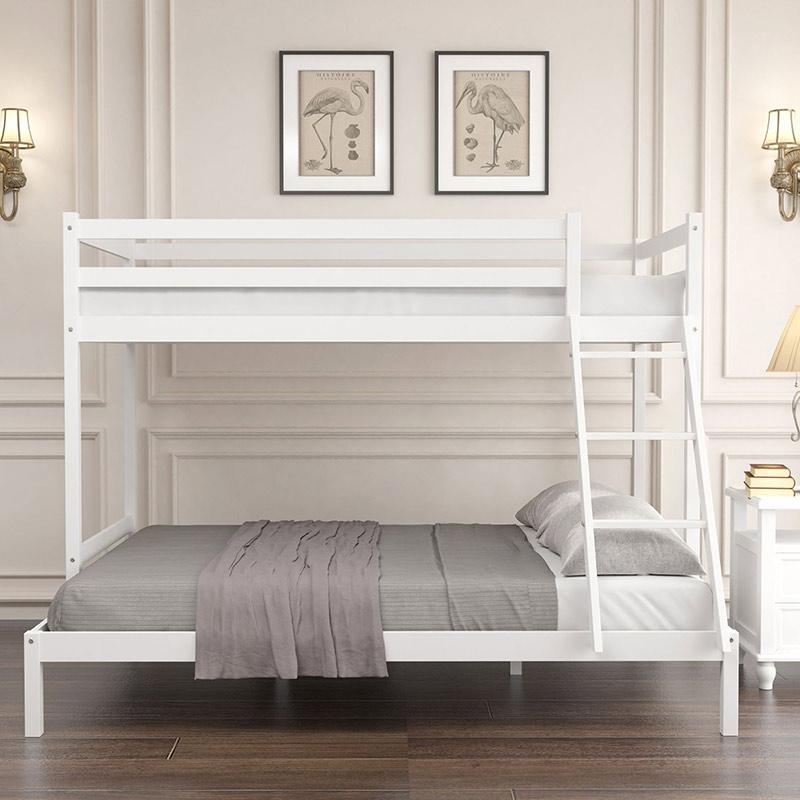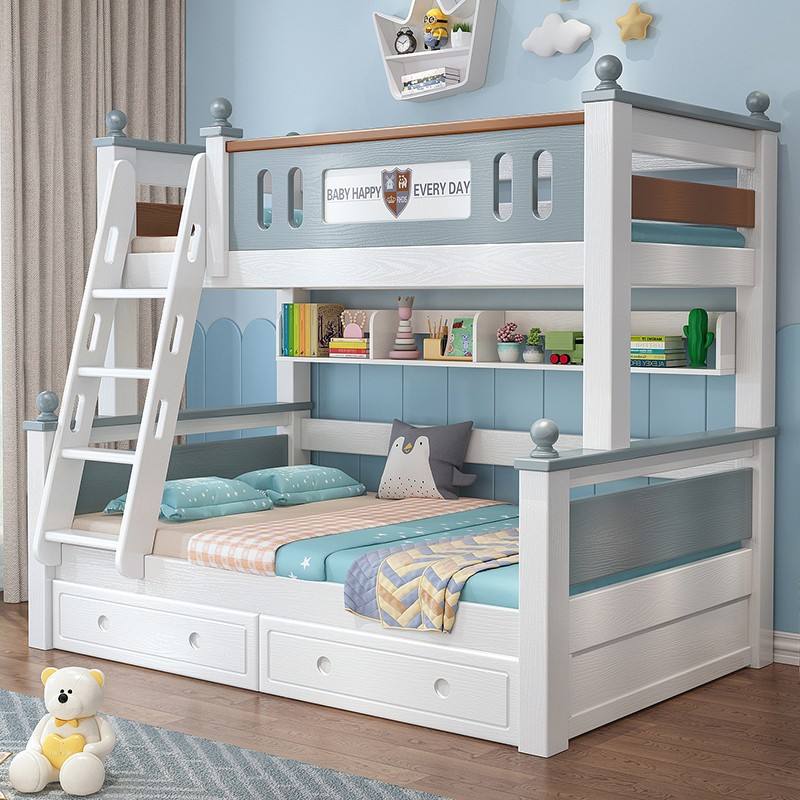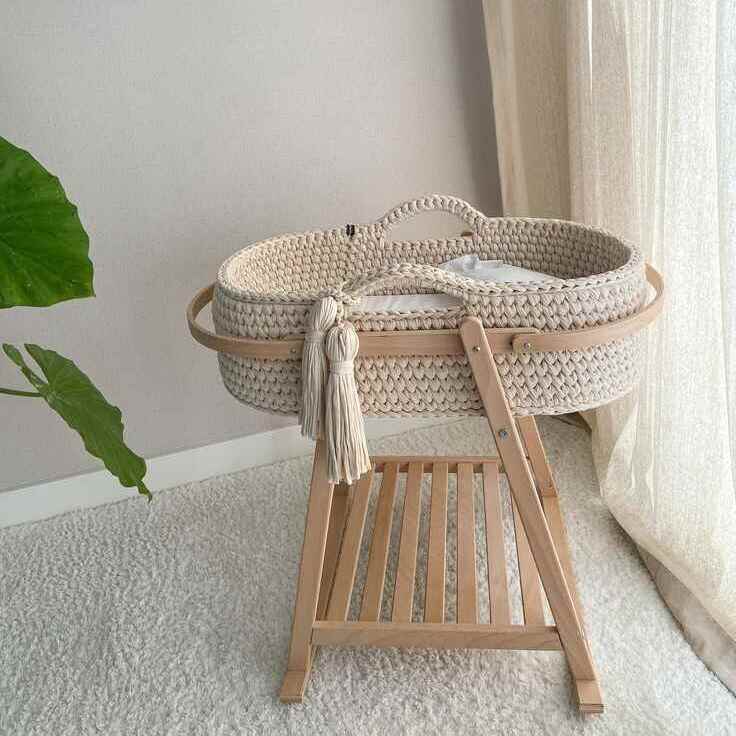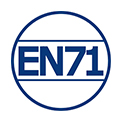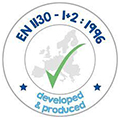Some kids may eat without a fuss while others may get fussy at the sight of food or cheekily want to turn mealtimes into playtime. High chairs are, therefore, a great reprieve because they enable parents to safely and comfortably situate children at meal times.
However, it is important to understand the safety standards for high chairs before choosing one. Please learn about the latest high chair safety knowledge and standards.
What Makes a High Chair Safe?
A high chair can only qualify as a safe high chair if it has all of the following features:
A Good Structure and Stability
The quality of a high chair’s structure determines whether it can safely bear the weight of a child without falling apart. Therefore, the material used to make the high chair must be strong and not easily worn out. They are better at bearing weight and are more durable.
Further, as we mentioned, kids can get fussy and playful at meal times. The way to keep them safe is to select a high chair with a stable base. This type of base is usually wide to balance the weight more evenly and keep the high chair from tipping over. Ditch those narrow or uneven bases.
Avoid choosing a high chair that is too light in weight. This type of product can easily lose its center of gravity and tip over.
Secure Locking Mechanisms
Some high chairs have wheels at the base. These wheels are intended to make it easier for parents and caregivers to move the high chair either by itself or with the child in it.
A safe high chair should, however, have a secure wheel locking mechanism that parents can engage once they have positioned the high chair as desired.
This is crucial because the lack of a locking mechanism allows the high chair to move if a child gets playful or fussy while in it. Such movement can result in falls, injuries, food spills, and other accidents.
Dependable Restraint Systems
A restraint may sound limiting but it prevents a child from slipping out of the high chair if they move around in it. They prevent falls in infants and young toddlers too and can help keep them properly positioned.
Some high chairs have 3-point harnesses while others have 5-point harnesses. Both offer protection but the 5-point harness is safer. It secures the child on both shoulders, the hip area, and the crotch. These points of contact make it hard for little ones to slide, climb, or fall off a high chair.
Safe Materials and Non-toxic Finishes
High chairs become a part of children’s feeding experiences. They use them multiple times a day and are thus in frequent contact with them.
Consequently, a safe high chair should be free of toxic and disease-causing materials and chemicals. Such compounds include lead, BPAs, and phthalates, among others.
Choosing high chairs free of such toxins ensures that children do not ingest them or suffer their hazardous effects through skin contact.
High Chair Safety Standards in Different Countries
Different countries have unique high chair safety standards for their jurisdictions. It is important to know this as an individual consumer and if you are an entrepreneur planning to sell high chairs in specific regions.
Let’s look at some of the safety standards in some trend-setting countries and regions, shall we?
USA
High chairs in the USA must meet the safety, design, and performance requirements stipulated under the ASTM F404-21 standards.
Some of the key structural requirements are as follows:
- High chair trays must be tested to establish their structural integrity.
- All high chairs must pass the stability test and must not tip over in any direction.
- The restraint mechanism must be tested and pass the strength and structural integrity test.
- High chairs must have a crotch restraint.
Other regulatory requirements outline the acceptable standards for surface coatings and limits for toxic substances like lead, phthalates, and others.
Additionally, the USA requires high chair manufacturers to indicate their age and weight limits. Each high chair should have a permanent tracking label too for accountability and tracing in the event of recalls.
The European Union
EU high chair safety standards are outlined in the EN 14988:2017+A1:2020 standards. They address safety regulations for high chairs for children up to the age of 3 in both domestic and non-domestic settings.
Some of the safety standards indicated include:
- All high chairs must be stable and pass the anti-tipping test.
- Each high chair must have a restraint system that provides safe fastening and straps that do not slip.
- High chairs should not have any small loose components that could become a safety hazard.
- All high chairs must have ample cushioning, a sturdy back, and a footrest for posture support.
These regulations also require high chair manufacturers to have permanent tracking labels for each high chair. This is in addition to age and weight limit labels and usage warnings.
Canada
Canada outlines most of its high chair safety regulations in the ASTM F404-14 standard. They stipulate the following:
- High manufacturers must label each unit indicating its name, model number, the date of production.
- Each high chair must have clear usage instructions, restriction guidelines (age, weight, height), and usage warnings.
- All high chairs must have a harness and lap belt (crotch & hip restraint).
- High chair trays must be stable and have no cracks or gaps that could cause finger pinching.
- High chairs must pass the stability and anti-tipping test.
- The cushion filling must be well-covered to keep children from pinching on it and possibly choking.
Australia
Australia’s high chair safety requirements are covered under the AS 4684:2009 regulations. High chairs that meet the EU regulations under EN 14988:2017+A1:2020 are also acceptable in the Australian jurisdiction.
The AS 4684:2009, nevertheless, addresses high chair safety as below:
- A high chair should not tip over on any side when vacant or with the weight of a baby on it.
- A high chair tray should be strong enough to remain intact even under the exertion of weight or force.
- High chairs should not have any gaps or spaces between parts that could entrap a child or cause finger pinching.
- All high chairs should have a 5-point harness.
- High chairs should have no small parts that could become choking hazards.
Common High Chair Safety Certifications and Labels
Reputable high chair manufacturers seek independent and mandatory tests for their high chair products.
When their high chairs pass the tests, they may earn certifications from independent regulatory bodies and laboratories.
The manufacturers may also earn the legal right to market their products as certified according to standards like those that we have discussed above; from the EU and other countries.
Subsequently, you may encounter high chairs with symbols or labels indicating that they are certified by:
JPMA: JPMA certification indicates that a high chair meets US federal and state regulation standards.
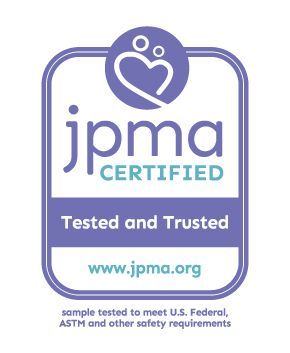
EN 14988: high chairs bearing this mark or label meet EU high chair safety regulatory standards.
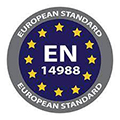
FSC: a Forest Stewardship Council (FSC) certification indicates that the high chair is made of wood obtained from a sustainable source.
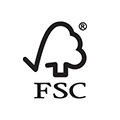
Greenguard: Greenguard certification is issued by the well-respected UL independent laboratory. It is granted to high chairs or other products that have been tested and found to have low VOC emissions.
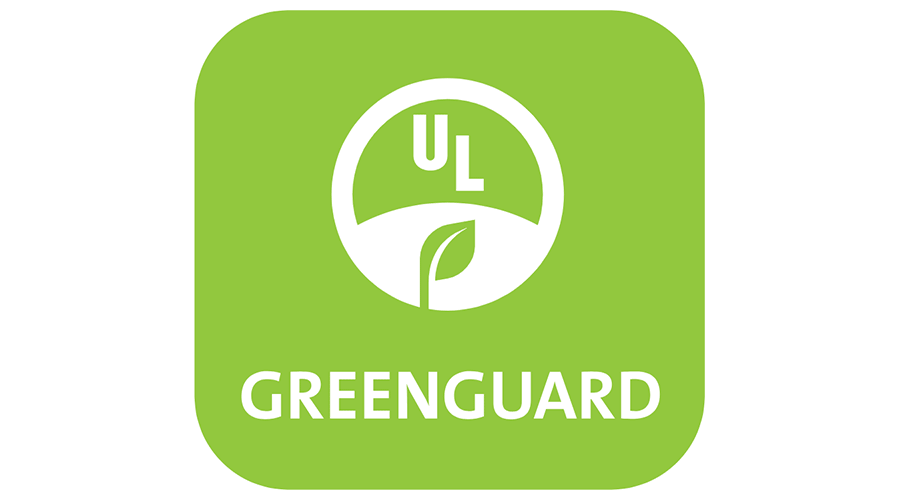
CE (Conformite Europeenne): CE certification indicates that a high chair meets the product safety, health, and environmental quality standards of the EU. It is mandatory for products sold in the EU but stands as a mark of quality in most parts of the world.
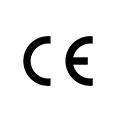
TÜV Rheinland Certification: This is a certification that is more common in Europe and Asia. It is affiliated with a third-party testing agency and certifies that the product meets strict safety and performance standards.
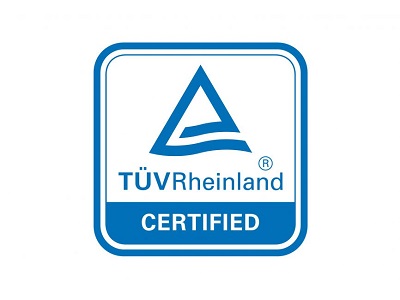
High Chair Safety Tips for Everyday Use
Identifying and buying high chairs that meet high safety standards is important but it is only the first step. True safety relies heavily on parents and caregivers using high chairs safely.
To that end, here are some tips to help you and your little one safely enjoy the benefits of a high chair.
Position the High Chair Safely
Always set up the high chair on a flat even surface to ensure proper stability. It is equally advisable to avoid placing the high chair near areas like windows where a child may feel tempted to try and climb out.
Test the High Chair Setup
Confirm that the high chair structure is properly deployed and every part is in place. Especially if it is a foldable design that you need to unfold to use. The base, in particular, should be fully stretched out to create balance for the chair. Adjust the seat to a suitable height too before placing the baby in it.
Secure the Harness
Always strap the baby in using the harness immediately after you place them in the high chair. It only takes a split second for them to slip so it is best to avoid this from the start.
Maintain Supervision
Do not leave a child unattended in a high chair no matter how stable or safe it may seem. The lack of supervision may tempt the child to try and maneuver out of the chair which can result in tragic outcomes. Take them out of the chair if you need to leave the room or attend to something else.
Teach the Basics
Where possible, try to teach your child basic safety rules around high chair usage. For example, Insist that they should always call out if they want to get off the high chair and never try to get off it unaided.
Help them learn that the high chair is only for meal times too; they should stand on it or try to use it for other games.
Conclusion
Choosing a quality high chair is fairly simple when you understand the basics of how it works. However, if you are ever in doubt, always check for certifications on a high chair to see if it complies with international safety standards or the recommended standards in your country.
Clafbebe is a professional high chair manufacturer with multiple safety and quality certifications. Our products meet the highest standards in Europe and America. We provide high chair wholesale and customized solutions to help you build your personal brand!
Recommended Related Articles:


